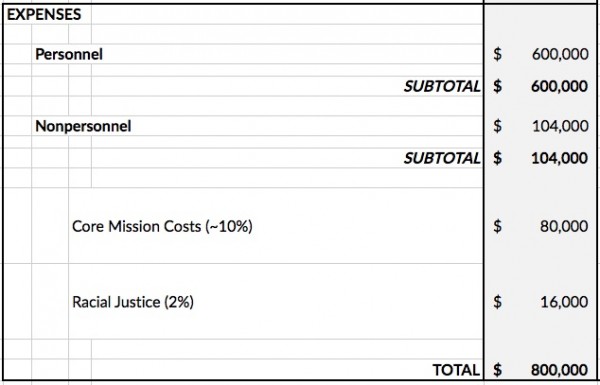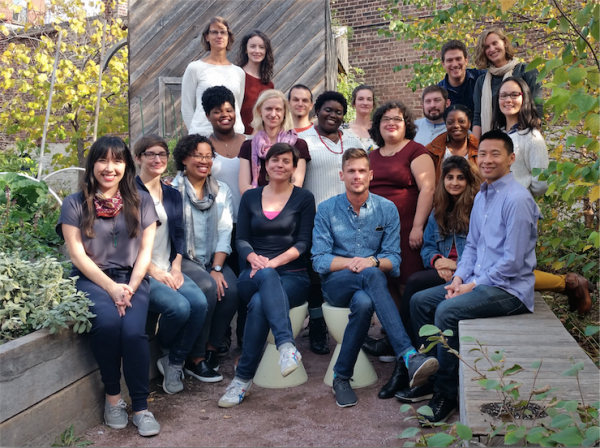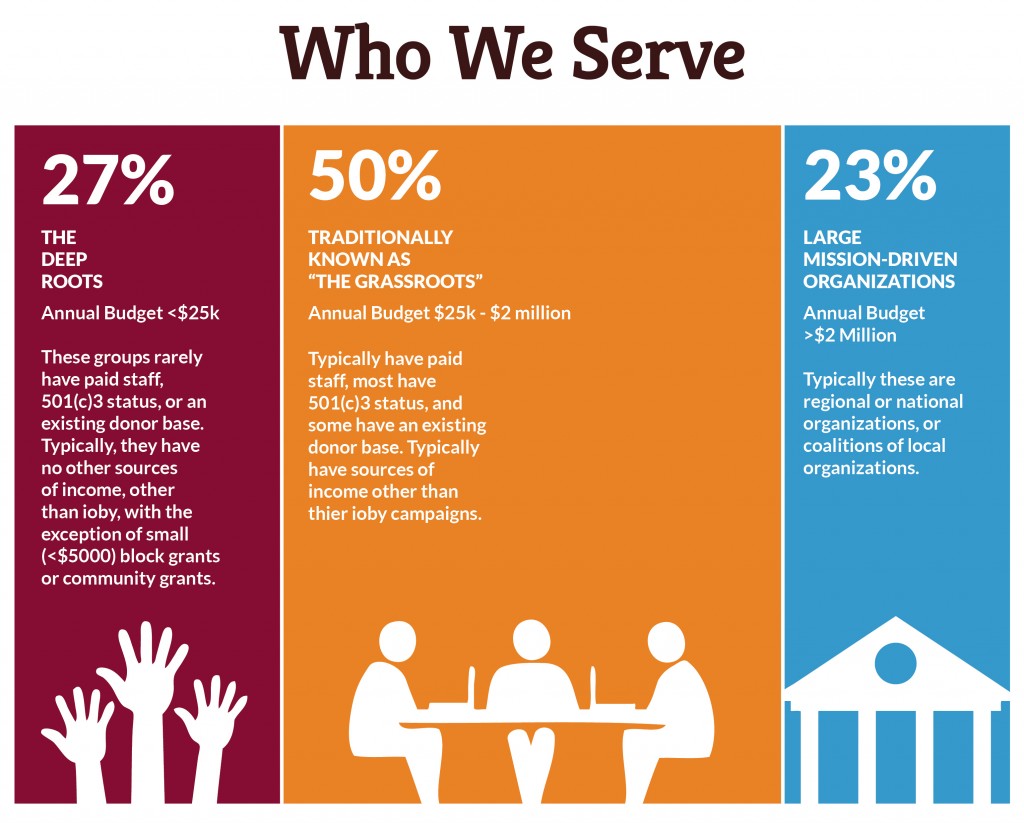Born in the wake of last summer’s shootings and out of Black Lives Matter, Bank Black is an increasingly high profile social movement that aims to bring the issue of financial inclusion to the forefront of the larger Black community’s awareness. Its message is this: why should we continue to put our money into the hands of large national banks that don’t speak for our Black community, don’t understand our needs, and don’t support us? There are relatively few Black-owned banks in the US – One United, Liberty, Industrial, Citizens Trust – But why not find them, get to know them, and put our money there?
“It’s not anecdotal,” says Justin Garrett Moore, a key Bank Black leader and Executive Director of NYC’s Public Design Commission by day (and an ioby board member), of the problem of the big national banks failing to support Black communities. “You look at the FDIC data, and 13-14% of people in America are Black, and these big banks loan 1% of their money to Black people. It’s not rocket science.”

[Justin Garrett Moore of Bank Black]
voices in the ether, feet on the ground
So far, the movement has taken place primarily online and on social media, with celebrities like Killer Mike and Solange raising their voices to join the call for action. Now, Moore and his team are turning the attention of the Bank Black movement to in-person events, as well. Think fliers on lampposts, lively gatherings outside of banks that make you want to pop over to see what’s up. Think bank-account sign up parties, community board meetings, booths at street fairs. Time to get feet on the pavement and bring financial inclusion activists together in real time – to share the ultimately physical act of voting, literally, with their dollars.
“Our ioby campaign is raising money to create the kit of materials,” explains Moore, “that we’ll be developing for those types of in-person community events, either at banks or in communities. And essentially, it’ll be something that people around the country can use to connect with us, and we’ll have a little set of materials so we can say ‘ok, print out these fliers, here’s a slide-deck, here’s some materials that you can use for email blasts. So they’re just ready to go, and people across the country will be able to deploy those.” Having a kit of materials accessible to leaders on the ground will give the movement a cohesive and unified voice – something it will need to hold onto, as it grows.
Is choosing a bank really life or death?
It’s a delicate thing, asking people who are already protesting life and death in the streets to pause for a moment and consider their bank accounts. As Moore explains, “it’s important that people focus a lot – especially now with Trump – on the more immediate things like their physical safety and basic rights. But there are these other issues that tend not to get addressed as much. People are upset and protesting for all the people getting killed – as they should – and that takes energy and focus away from other conversations, like the fact that we don’t have financial equity in our communities.”

[The formerly vacant lot the Moore family turned into a community garden in their Indianapolis neighborhood]
How it feels to be shut out of the system
Financial inclusion is a very personal, very fraught issue for Moore. In 2011, when he and his family – who’ve always been incredibly active in their inner-city Indianapolis community – decided to create a nonprofit called Urban Patch, they started by finding a vacant lot and vacant home to fix up as a community hub and a model of possibility. They found the right house and started approaching banks, but despite the fact that they had the down payment ready to go, were preapproved, and had an 800+ credit score, no one would give them a mortgage. When Moore talks about it, his voice wavers with profound sadness and frustration.
“It’s a complicated story,” Moore explains. “It’s not like the bank was saying outright ‘oh, you’re Black, you can’t get a loan.’ It was a combination of issues that happen in Black communities. In that gentrifying neighborhood, we would see white buyers come in, and they could get financing, but somehow that didn’t work out for us, even trying three different banks and being from the neighborhood. Three different appraisers came out, they come to the neighborhood, they see a lot of Black people, and magically the house isn’t worth very much. But a white person goes into a neighborhood, and the appraiser shows up, the fact that a white person is there means the house is worth something. No one wants to say that and acknowledge that that still exists in America, but I can tell you that it does.”
Eventually, Moore bought the house in cash, and worked with a small local community bank to get the loan to fix the house up. But getting Urban Patch up and running would have been a whole lot easier had their been a Black-owned, small-scale bank in Indianapolis – one that would have understood his situation. He’d like to see others given that opportunity.
For more info, or to donate, check out the Bank Black ioby campaign page. And stay tuned on social media (#BankBlack) for Bank Black events in your area.
Feeling inspired? Want to take action in YOUR neighborhood? If you have awesome ideas about how to make your town greener, safer, and more fun, let us help! Tell us your awesome idea right here. We’d love to help you get started today.
Pssst…. In OTHER ioby news: Ready to take action, but still looking for the right idea, or the most engaging language to use when you go to share ideas with your community? Check out our new Healthier Communities webinar!





